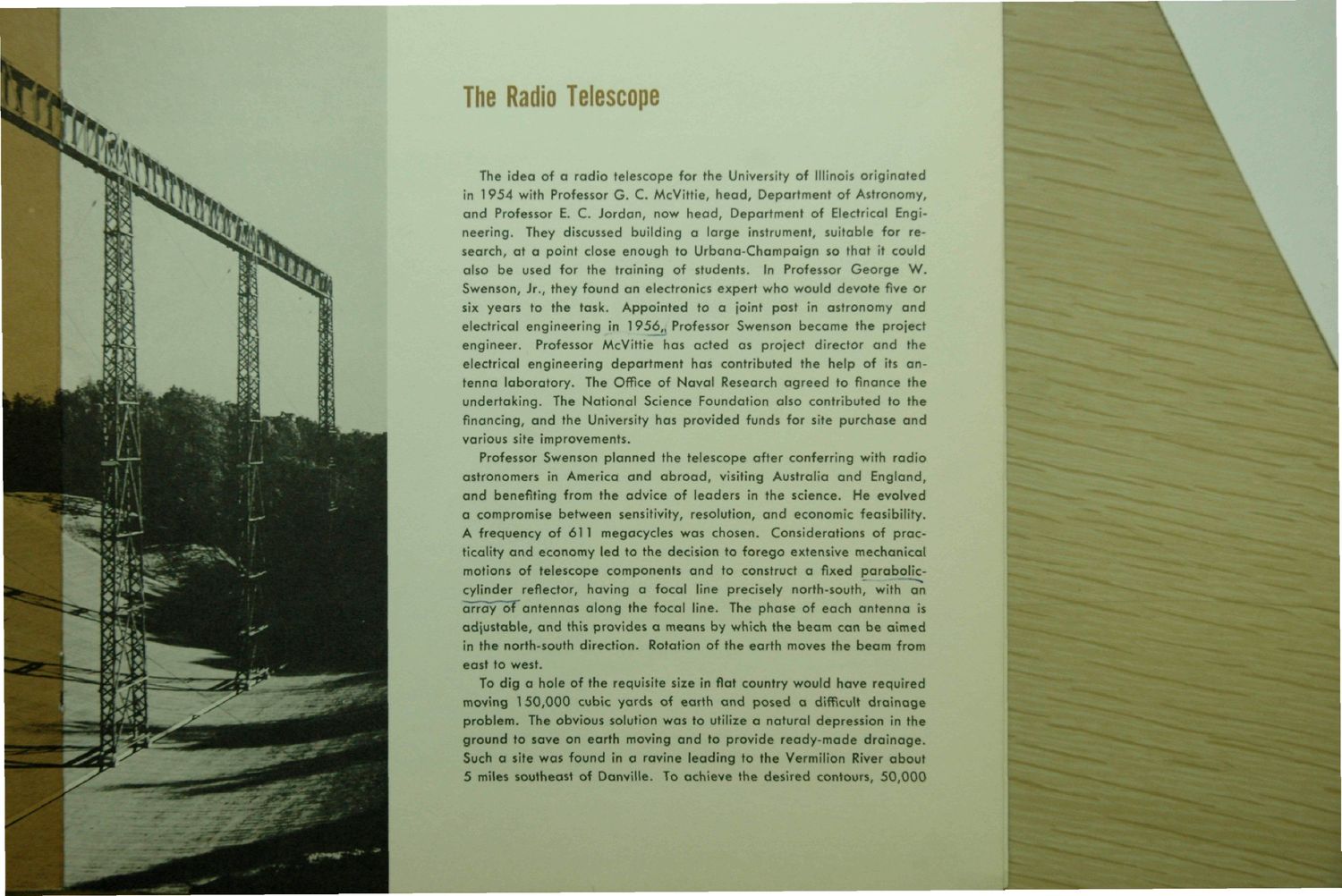| |
| |
Caption: Dedication - Radio Telescope
This is a reduced-resolution page image for fast online browsing.

EXTRACTED TEXT FROM PAGE:
The Radio Telescope The idea of a radio telescope for the University of Illinois originated in 1954 with Professor G. C. McVittie, head, Department of Astronomy, and Professor E. C. Jordan, now head, Department of Electrical Engineering. They discussed building a large instrument, suitable for research, at a point close enough to Urbana-Champaign so that it could also be used for the training of students. In Professor George W. Swenson, Jr., they found an electronics expert who would devote five or six years to the task. Appointed to a joint post in astronomy and electrical engineering in 1956,, Professor Swenson became the project engineer. Professor McVittie has acted as project director and the electrical engineering department has contributed the help of its antenna laboratory. The Office of Naval Research agreed to finance the undertaking. The National Science Foundation also contributed to the financing, and the University has provided funds for site purchase and various site improvements. Professor Swenson planned the telescope after conferring with radio astronomers in America and abroad, visiting Australia and England, and benefiting from the advice of leaders in the science. Ho evolved a compromise between sensitivity, resolution, and economic feasibility. A frequency of 611 megacycles was chosen. Considerations of practicality and economy led to the decision to forego extensive mechanical motions of telescope components and to construct a fixed paraboliccylinder reflector, having a focal line precisely north-south, with an array o r antennas along the focal line. The phase of each antenna is adjustable, and this provides a means by which the beam can be aimed in the north-south direction. Rotation of the earth moves the beam from east to west. To dig a hole of the requisite size in flat country would have required moving 150,000 cubic yards of earth and posed a difficult drainage problem. The obvious solution was to utilize a natural depression in the ground to save on earth moving and to provide ready-made drainage. Such a site was found in a ravine leading to the Vermilion River about 5 miles southeast of Danville. To achieve the desired contours, 50,000
| |